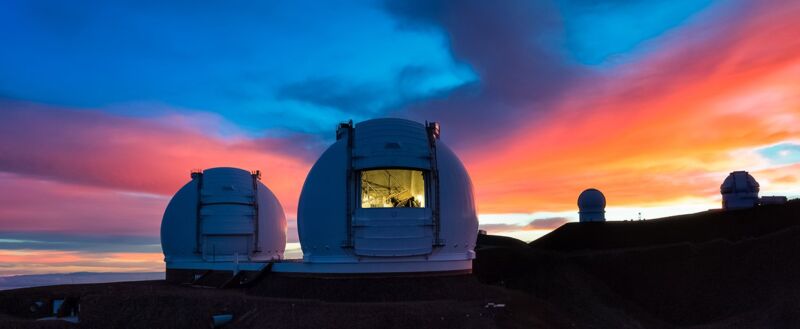The exoplanet 8 Ursae Minoris b should not exist. It orbits its host star at just half the Earth-Sun distance, and by all indications, the star should have gone through a phase in which it bloated up enough to engulf that entire orbit and then some. Yet 8 Ursae Minoris b definitely appears to exist.
There is a handful of potential explanations, none of them especially likely. The people who discovered the planet are suggesting that it survived because its host star got distracted by swallowing a white dwarf instead.
Big and hot
8 Ursae Minoris b was discovered using the radial velocity method, which watches for changes in a star's light that occur as planets tug the star back and forth as they orbit. This tugging creates a blue shift in the light when the planet is pulling the star in the direction of Earth and a red shift when the star is pulled away from Earth.
But the planet is unlikely to be tugging the star directly toward Earth, so we tend to only measure the component of the star's motion that's in our direction. We'd see the same apparent motion of the star if a light planet's orbit was oriented directly toward Earth or a very heavy planet that has a relatively skewed orbit. At best, radial velocity measurements give us an estimate of the minimum mass of the planet; it could potentially be larger.
So we know that, at minimum, 8 Ursae Minoris b is a big planet, at over 1.6 times the mass of Jupiter. It also resides close to its host star, completing a full orbit in just 93 days. That places it at half an Astronomical Unit (AU, the typical distance between Earth and the Sun) from its star.
Observations also hint at a second body orbiting the star at least five AU. The evidence for that is weak given the current data, but it may have a significant role in shaping the system.
On its own, there's nothing especially unusual about the 8 Ursae Minoris exosolar system. Where things get weird is when you consider the star at the center of the system.
This doesn’t add up
Observations suggest that 8 Ursae Minoris, the star, is about 1.5 times the mass of the Sun but is now significantly older. It appears to have already gone through the period where it started running low on hydrogen fuel and swelled up as a tenuous hydrogen-burning atmosphere surrounded an ever-growing helium-rich core. Eventually, 8 Ursae Minoris switched over to burning helium and now exists as a hotter, more compact star fueled by helium fusion.
And that means there's a problem. Based on the mass of the star, it should have grown until its outer edges extended to 0.7 AU. The planet orbits at 0.5 AU, meaning it should have ended up inside the envelope of the star. And as far as we can tell, planets can't survive that. Calculations show they'll quickly lose orbital velocity to friction and rapidly spiral toward the star's core. Observations have failed to show any planets orbiting close to a star of similar age and size to 8 Ursae Minoris, suggesting that these calculations are right.
So the planet shouldn't be there. Why is it?



3175x175(CURRENT).thumb.jpg.b05acc060982b36f5891ba728e6d953c.jpg)
Recommended Comments
There are no comments to display.
Join the conversation
You can post now and register later. If you have an account, sign in now to post with your account.
Note: Your post will require moderator approval before it will be visible.